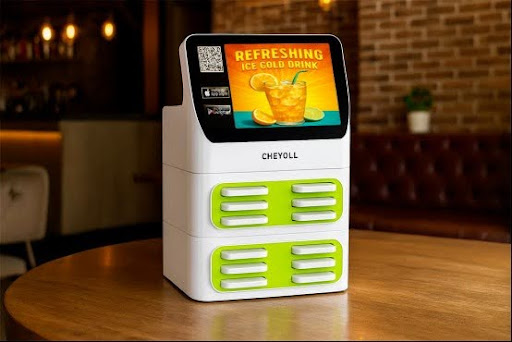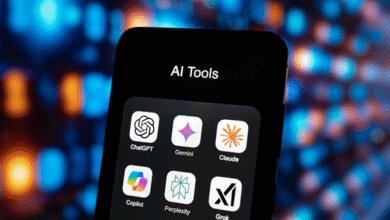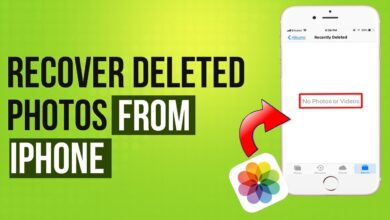Mobile Power Bank Advertising: The Hidden Profit Opportunity

In today’s sharing economy, shared power banks have evolved from being mere charging tools into high-potential advertising platforms. Initially designed to solve the urgent problem of low battery during travel, shared power banks became an indispensable part of daily life—whether shopping in malls, dining in restaurants, or waiting at train stations and airports.
With widespread adoption, their commercial value began to unfold. Shared power banks and their cabinets often feature large surface areas—ideal for displaying ads. Moreover, they are deployed in diverse high-traffic settings across cities, enabling frequent and targeted ad exposure. As such, these devices have successfully transitioned from utility products to compelling advertising vehicles.
Market Potential of Power Bank Advertising
As mobile internet usage skyrockets, dependency on electronic devices continues to grow—fueling demand for portable charging. Simultaneously, the advertising industry is constantly seeking innovative channels to adapt to changing consumer behavior. Shared power bank advertising, a rising format, is revealing its vast market potential.
A Massive User Base
Shared power banks serve a wide user demographic. With smartphones now essential for daily life, battery depletion while out and about is a common problem. Power bank rentals solve this issue, earning popularity across all age and income groups.
According to a Global survey, the shared power bank market was valued at $13.4311 billion in 2024, and is projected to grow from $15.86348 billion in 2025 to $22.12949 billion by 2033, with a CAGR of approximately 18.11% over the forecast period (2025–2033).
This ever-expanding user base offers a broad landscape for advertising, ensuring wide exposure and more touchpoints for potential consumers.
High-Frequency Usage Scenarios
Power banks are used in a wide range of scenarios—from airports and train stations to shopping malls and cafés. These high-traffic locations, filled with purchasing intent, allow repeated ad exposure and reinforce brand recall.
Additionally, users in each setting may have different interests and behaviors. Advertisers can tailor content based on location—for example, promoting travel products in airports or entertainment ads near cinemas—allowing for targeted, scenario-specific ad delivery.
Diverse Advertising Formats
Shared power bank advertising offers multiple formats:
Physical unit ads: Brand exposure via printed messages on the machine or the power bank itself.
In-app splash ads: Grab attention when users unlock the app.
Interstitial ads: Displayed prominently during user interaction.
Native feed ads: Seamlessly integrated into content flow.
These formats cater to different campaign goals—whether it’s brand building or product push—making power bank advertising versatile and highly adaptable.
Growing Advertising Demand
In today’s hyper-competitive marketplace, brands demand more effective, trackable advertising. Traditional media—TV, newspapers, and billboards—often incur high costs with less targeting. In contrast, shared power bank ads are affordable, interactive, and highly targeted.
With increasing pressure for ROI and accountability, businesses are shifting to cost-effective, tech-enabled options. Hence, demand for power bank advertising is set to rise.
Monetization Models of Power Bank Advertising
The monetization potential of shared power bank advertising is diverse. Operators can generate revenue by selling ad slots or by co-branding with partners. Here are the main models:
Ad Slot Leasing
The most direct model: leasing out advertising space on the power bank units. Pricing depends on placement, display time, and audience reach. Peak times like holidays can drive rates higher. Advertisers can select slots based on budget and goals, while operators enjoy a stable revenue stream.
Brand Collaboration & Custom Units
Collaborating with brands to create custom power bank designs—complete with logos and visual messaging. Additional exposure can be delivered via branded sections in the app or mini program, featuring product details, promos, or stories.
This enhances brand impact while providing operators with branding fees and co-marketing benefits.
Data-Driven Targeted Marketing
By leveraging user behavior data, operators can offer advertisers in-depth audience insights and targeting strategies. Analytics can help advertisers reach their ideal consumers more effectively, improving conversion and ROI. In return, advertisers may pay for data access or consultancy services.
Premium Services and Membership
Offering add-on services—such as fast charging or multi-device support—encourages users to pay. Membership programs can include exclusive deals, loyalty points, and personalized services. Advertisements can be integrated into these services—e.g., members-only offers or point-based ad product exchanges—opening up further revenue streams.
Capturing the Opportunity: How to Maximize Shared Power Bank Advertising
With such strong market potential, how can businesses seize this opportunity and drive value?
Optimize Ad Placement Strategies
Power bank operators should craft personalized ad strategies based on usage scenarios and target demographics. For instance:
- Near schools: promote educational tools, electronics, and entertainment.
- At tourist sites: show ads for souvenirs, food, or hotel booking.
Scheduling matters too—ads should be timed to match traffic flows without overwhelming users. Smart targeting leads to higher engagement and better ROI for advertisers.
Invest in Brand Building
A well-recognized, trusted brand earns more trust from both users and advertisers. Shared power bank companies should invest in:
- Quality products and services
- CSR and sustainability efforts
- Strategic brand communication
A strong reputation will strengthen partnerships and attract more ad clients.
Foster Long-Term Partnerships
Build solid relationships with advertisers, merchants, and location partners.
- Communicate regularly with advertisers to fine-tune campaigns.
- Co-launch promotions with local businesses for mutual benefits.
- Negotiate win-win terms with venue owners to ensure smooth deployment.
Collaboration is key to scaling market reach.
Conclusion
The evolution of shared power banks from simple charging tools to smart advertising media has unlocked new frontiers for the ad industry. For operators, it has paved the way for multi-channel monetization.
As a rising star in the advertising world, power bank advertising presents vast market potential and profit possibilities. With technology advancing and the ecosystem maturing, this format is set to become a new blue ocean in marketing—delivering enhanced brand reach and consumer value in one charge.




